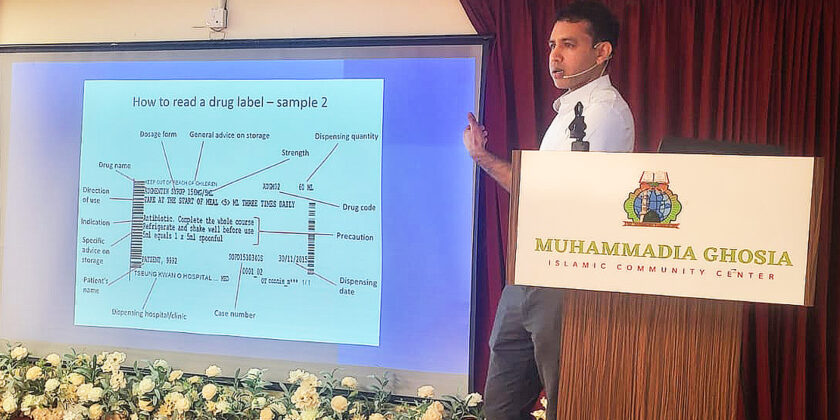Spotlight on the Only Pakistani-registered Pharmacist in HK: Improve Ethnic Minority Health Inequity with Drug Icons
As the only Pakistani-registered pharmacist in Hong Kong, Yasir Luqman is making a significant difference in the lives of many and paving the way for a more inclusive and equitable healthcare system. He has passed the pharmacist registration examination in both Pakistan and Hong Kong and worked as a medical interpreter for the Hospital Authority and Department of Health through a social enterprise before becoming a pharmacist. During that time, he witnessed the firsthand challenges faced by minority communities in accessing appropriate treatment. To bridge this gap, he initially resorted to writing notes in Urdu to guide minority community members on how to take their medications and understand necessary precautions. A turning point came when he connected with Albert, the founder of Drug Icon CC. Albert invited Yasir to collaborate in translating medication icons into Urdu, introducing him to using these innovative medication education tools.

Breaking Language Barriers with Innovative Drug Icons

Common Challenge to Ethnic Minorities: Uncomprehend Drug Labels
Yasir mentioned that Hong Kong’s drug labels could be confusing for patients with poor educational levels and the elderly to accurately understand. As a result, they may struggle to take medications at the correct dosage and through the appropriate route. For instance, they often fail to grasp the meaning of “completing the full course”in the antibiotics package instructions. Yasir suggested adding the number of days for the course on the medication label to make it more obvious for patients that the medication should be taken for the entire prescribed duration.
While working as a community pharmacist, Yasir witnessed several incidents posed by misunderstanding drug labels. One incident that left a lasting impression was a patient taking nitroglycerin tablets twice daily. Fortunately, the patient sought medical attention due to discomfort, and the healthcare professionals promptly discovered the error. Nitroglycerin is an emergency medication used to relieve chest pain and should only be taken when needed. Without proper indication can lead to a drop in blood pressure and potential shock. Such instances highlight the critical need for clear medication labels, especially for emergency medications. For ethnic minority communities, obtaining medication is just the initial step; understanding and following drug labels correctly are essential for receiving proper treatment.